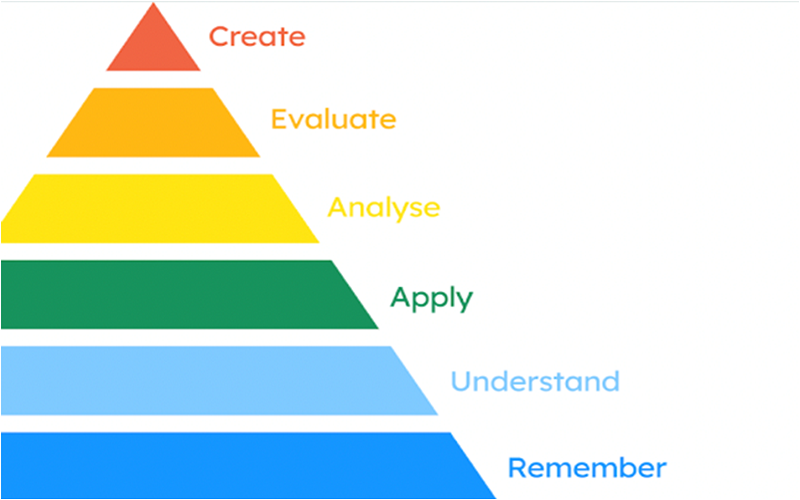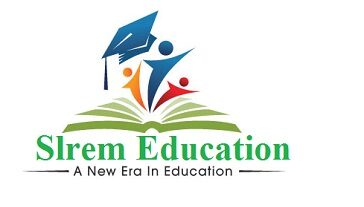Bloom’s Taxonomy is a model that records the whole learning process and depth of learning outcomes. It completes the entire learning circle, from consuming knowledge to synthesizing facts to producing creative work. Thus, it is a useful lens through which you can evaluate a teaching program. Because of this, it is a widely used and reliable framework that many educators rely on to design and assess learning outcomes. Here is everything you need to know about the process.
What Is Bloom’s Taxonomy?
Benjamin Bloom was an American educational psychologist who lived from 1931 until 1999. Through his emphasis on learning mastery, his concepts evolved into what is today referred to as Bloom’s Taxonomy. It acts as the hierarchy of learning objectives. Giving educators a common vocabulary to discuss curriculum design and evaluation was its initial goal. Teachers utilize it now throughout the world.
The three domains of Bloom’s Taxonomy, namely the cognitive, affective, and psychomotor domains represent the many forms of learning that individuals engage in. Every topic has a range of learning levels, arranged from easiest to hardest, and is connected to pertinent action verbs. Teachers might find Bloom’s Taxonomy to be a helpful aid when they are organizing.
The Current And Revised Bloom’s Taxonomy
To define a more dynamic idea of categorization, a group of cognitive psychologists, curriculum theorists, instructional researchers, and testing and assessment experts rewrote Bloom’s Taxonomy in 2001. The majority of instructors use this paradigm in their work today.

Source: turnitin.com
The updated Bloom’s Taxonomy categorizes a student’s relationship to specified learning objectives using six levels of cognition. As of 2001, there were six levels, ranked from lowest to highest:
- Remember
- Understand
- Apply
- Analyze
- Evaluate
- Create
Every level builds on the one below it hierarchically. As they assist students in transitioning from basic to more sophisticated cognitive capacities and learning outcomes, educators can use this framework as a guide.
How To Use Bloom’s Taxonomy In The Classroom
Teachers may utilize Bloom’s Taxonomy to help their learners think more critically by starting with lower-level cognitive levels in lesson plans and curricula. It can be used to:
- Help students remember course material
- Understand concepts
- Apply information
- Analyze and connect concepts
- Proceed to the evaluation point of view
- Create original work ideas based on their understanding
Logical development is ensured by creating a lesson plan or curriculum that has students acquire facts first, analyze them, and then synthesize their thoughts.
In language learning, students might begin by learning what a thesis sentence is. After that, they might be divided into smaller groups to identify thesis statements in different types of writing. They debate these results and provide arguments for their decisions in a broad conversation. Once more divided into smaller groups, students may read brief passages and develop thesis statements, which they would then present to the entire class. Students can analyze and contrast several thesis statements for the same passage during a broad class discussion before developing their arguments for individual projects.
Some other ways you can apply Bloom’s Taxonomy are:
Inform Your Learning Intentions
Many images are available that integrate all the action verbs and domains into a single visual cue. Once you’ve selected your favorite, don’t lose it! Make thoughtful decisions about where to pitch lessons with it, and resist the want to always use the same verbs associated with learning objectives.
Promote Deeper Thinking
The questions you ask can significantly influence students’ ability to form connections, advance their cognitive development, and think at a higher level. A query along the lines of ‘how many?’ might be asked. A thought-provoking query is necessary for analysis, such as ‘What is the underlying theme?’ You may use questions like ‘What would happen if?’ or ‘How many ways can you?’ to elicit more imaginative thinking.
Differentiate Your Lessons
To assist you in differentiating your courses, make use of your resources for verbs and questions. When having class discussions, you can use verbs and higher-order thinking abilities. Alternately, provide early finishers an additional challenge and deepen the learning for advanced students who are prepared to go beyond.
3 Tips For Applying Bloom’s Taxonomy To Assessment
The following advice can help you use Bloom’s Taxonomy for more successful assessments:
1. Be Mindful Of The Hierarchy
It’s critical to keep in mind that Bloom’s Taxonomy is a hierarchical framework, with the lowest degree of cognition at the bottom while choosing your semester’s learning objectives. It is essential to design test questions based on projected learning abilities concerning those levels. Exams given early in the semester, for instance, could simply include questions related to Bloom’s Remembering level, followed by (and in addition to) questions related to Understanding and Applying.
2. Introduce Items That Fosters Cognition
Teachers can start using questions from each of Bloom’s Taxonomy’s higher levels once students have mastered the learning objectives linked to the lower levels. Teachers may choose to emphasize the higher levels of Bloom’s Taxonomy more than the lower levels as the semester progresses and students’ comprehension of the subject grows.
3. Analyze Results And Readjust
Teachers can identify which learning goals may need to be reviewed in light of Bloom’s Taxonomy after evaluating exams. Use tools that allow you to align each exam question with the six Bloom’s levels and important course goals to assess student learning appropriately. Exam items may be tagged to important categories, giving educators readable reports that can be used to pinpoint problem areas and modify the curriculum to keep students on course.
Change The Face Of Your Classroom With Bloom’s Taxonomy
A system for classifying and arranging learning objectives and competencies is called Bloom’s Taxonomy. Teachers who have pursued teacher training courses may create learning activities and evaluations. These can gradually advance students’ thinking skills from simple knowledge recall to higher-order thinking and problem-solving techniques.





